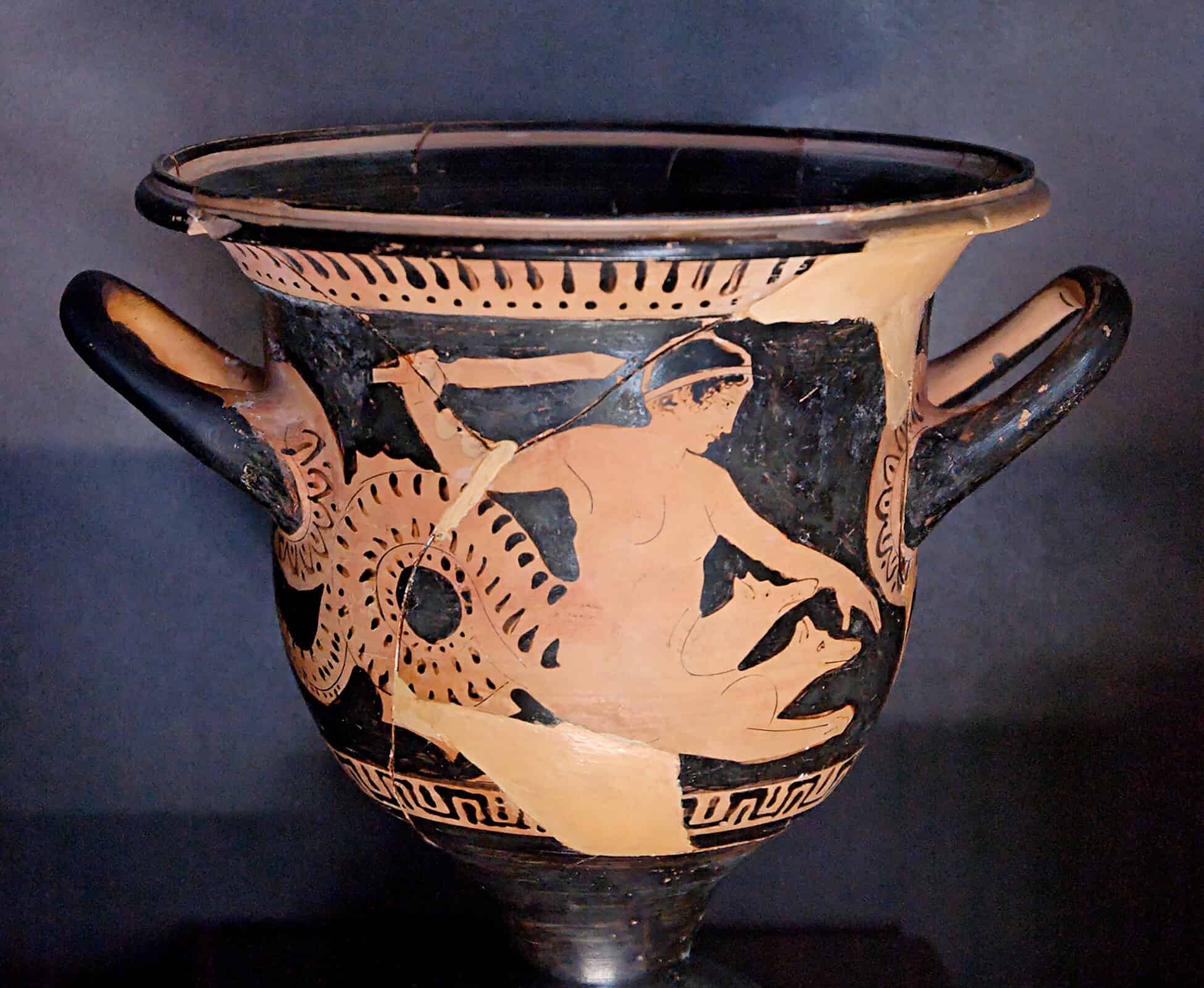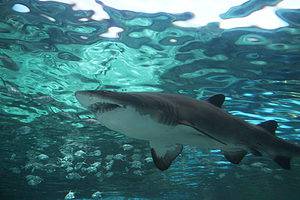The ancient Greeks had many captivating tales about the boundless nature of the sea, a realm they both cherished and feared. Many of their elaborate myths and legends offered insights into this relationship, with mercurial gods and goddesses alongside ferocious creatures like the notorious Scylla. Let’s take a closer look at Scylla, the dangerous sea monster who swallowed sailors with her insatiable appetite!
Who Is Scylla?
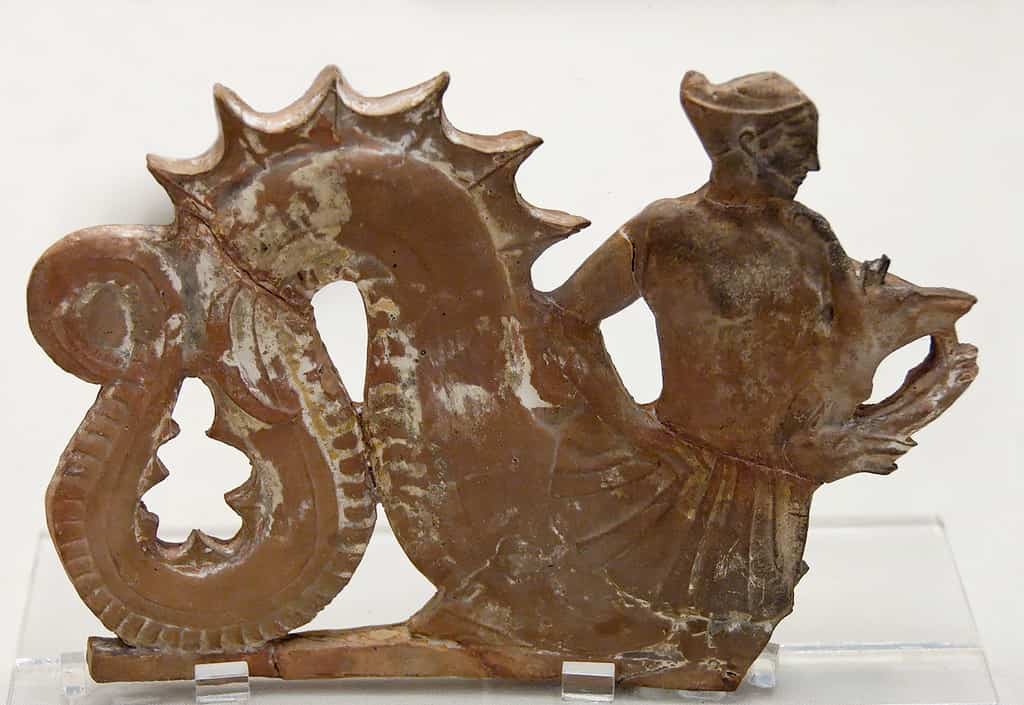
The ancient Greeks and Romans described Scylla in many different forms.
Scylla is often spoken of alongside her monstrous counterpart, Charybdis. Emerging from the ancient depths of the sea, Scylla and Charybdis were fabled creatures who dwelled upon opposite sides of a narrow waterway. Both were formidable monsters who could not be defeated — inevitability leading to a great deal of death and bloodshed. To sail through this treacherous and restricted passage, sailors had to confront at least one of the two monstrous beings, as the passage wasn’t large enough to avoid them. Even today, the phrase “between Scylla and Charybdis” is often used as a poetic way to express being stuck between two equally difficult choices.
However, many sailors chose to venture closer to Scylla’s side of the narrow passage, rather than tempt fate with Charybdis. You see, three times each day, Charybdis unleashed her wrath and pulled the waters of the channel into her abyss, only to spew them back out in a colossal maelstrom. Attempting to sail past Charybdis guaranteed certain death with no survivors.
On the other hand, ships that chose to sail closer to Scylla still had a chance to escape — although not entirely unscathed. Any ships that sailed too close to her cave lost six men to her six ravenous heads. In order to pass through the waterway, the crew had to sacrifice these men to the hideous monster, distracting her long enough for the rest to make a getaway.
What Does Scylla Look Like?
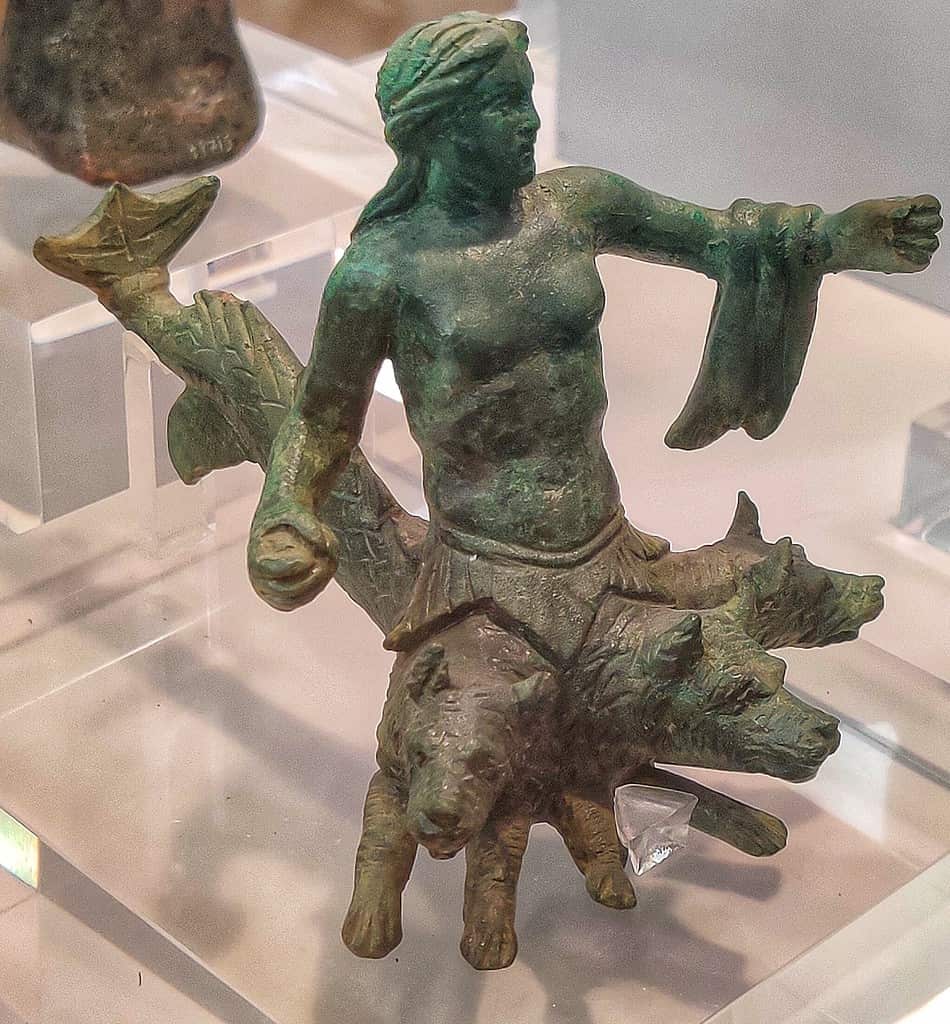
She is often portrayed with the tail of a fish or dragon and several dogs surrounding her waist.
Few remember the original beauty of Scylla after it was replaced by her monstrous form. The earliest record of her appearance comes from the ancient Greek poet Homer. In Homer’s Odyssey, Scylla is a dangerous and hideous sea monster with an enormous crab-like shell and 12 deformed feet. Her loins were girdled by the heads of baying dogs, adding to her terrifying and formidable appearance. In addition, six snake-like heads, each with a triple row of sharp, shark-like teeth, sprouted from her body.
In later portrayals, Scylla was notably influenced by Roman art. She took on a more captivating form of a mermaid with the majestic heads of wolves or dogs. The Latin author Hyginus said that Scylla had a woman’s body from the waist up, and a fish’s body from the waist down. Six dogs protruded from the middle of the body where her human half and fish half came together.
Where Did Scylla Come From?

Scylla began life as a nereid or sea nymph, a female spirit of sea waters.
©Serenko Natalia/Shutterstock.com
Scylla was not always a dangerous sea monster. In fact, Scylla began her life as a simple sea nymph or nereid. Ancient Greek and Roman authors argued over who her parents were. Apollodorus, Homer, and Ovid said that her mother was Crataeis or Ceto, an obscure primordial sea goddess. Others believed it was Hecate, the magical goddess of crossroads, or Lamia, Poseidon’s shape-shifting daughter. Scylla’s father was a sea god, either Triton, Phorcys, or Poseidon. However, Ovid reported that her father was King Nisus of Megara.
Scylla resided among the other sea nymphs, creatures renowned for captivating the hearts of young men with their beauty. Scylla was so beautiful and alluring that any man who saw her instantly fell in love. Some stories say that Poseidon favored Scylla, so Amphitrite turned the young sea nymph into a monster. In other tales, Scylla is innocent and afraid of men, or she is vain and brags about her beauty.
In these tellings, a minor sea god named Glaucus saw Scylla and was bewitched by her otherworldly beauty. However, Scylla ran from him, either afraid for herself or disgusted by his fish-like form. Glaucus turned to the powerful sorceress Circe, who, unbeknownst to Gaucus, had a bit of a crush on him. So, when Circe discovered his desire for Scylla, she was very jealous. In her rage, the sorceress poisoned one of Scylla’s cherished bathing pools with a powerful potion.
As Scylla immersed herself in the pool, the potion began a cruel metamorphosis. Her once graceful legs contorted into frenzied hounds and she grew a spikey, dragon-like tail. In addition, six grotesque serpentine heads burst forth from her delicate back.
Where Did Scylla Live?
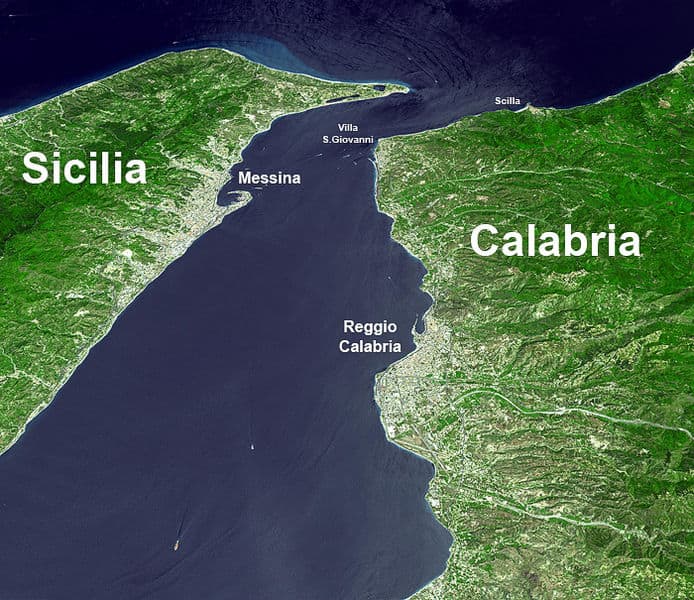
Even today, sailing through the Strait of Messina is dangerous.
In her new monstrous form, Scylla took up residence across from Charybdis, where she devoured anything she could get her monstrous teeth on. According to ancient Greek mythology, Scylla and Charybdis dwelt along the coast of Sicily. They were often used as a profound metaphor for the treacherous nature of the ocean. Scylla and Charybdis served as a solemn reminder of the countless perils and hardships that sailors faced during their voyages.
According to modern research, Scylla and Charybdis inhabited the Strait of Messina, a dangerous 25-mile-long channel that separates Italy’s Calabria Peninsula from Sicily. This strategic passageway links the Ionian Sea to the Tyrrhenian Sea. It acts as a significant boundary between Sicily and the Appennine Peninsula. It is important to note that this narrow and perilous channel measures a mere 1.9 miles in width at its narrowest point. In addition, there are currents that run in opposite directions to one another and change every six hours, creating intricate and treacherous waves and whirlpools. Navigating through the Strait of Messina demands extraordinary caution and skill, even today.
What Happened to Scylla?

The Italian commune Scilla is a town in Calabria where many say Scylla once lived.
©cristian ghisla/Shutterstock.com
According to the Byzantine Greek scholar, Eustathius of Thessalonica, the mighty Greek hero Heracles killed Scylla on his journey to Sicily. However, in Eustathius’ commentary, he asserts that Scylla’s father was the powerful sea god, Phoycys. Scylla’s death was too much for the sea god, so he brought her back to life by attaching flaming torches to her body.
Scylla in the Myths and Legends of the Ancient Greeks

Scylla’s name means “puppy” or “she who tends”.
©Jastrow (Marie-Lan Nguyen) / Public Domain – Original / License
Scylla features in many Greek tales, like Homer’s Odyssey and the Argonautica by Apollonius Rhodius. She is also included in the Bibliotheca of Pseudo-Apoolodorus, as well as Virgil’s Latin epic, the Aeneid and Ovid’s Metamorphoses.
The Argonautica and the Aeneid
In the Argonautica, the hero Jason sets sail upon the Argo to retrieve the Golden Fleece. The Argonauts face many challenges on their journey, including the sea monsters Scylla and Charybdis. Fortunately, Phineas warns the crew about the terrible sea monsters, and with the divine guidance of Thetis, they safely make it through the narrow passage. Virgil also mentions the two sea monsters in the Aeneid, as Aeneus and his valiant crew make the arduous journey from Troy to Italy.
Ovid’s Metamorphoses
Ovid also wrote of Scylla’s transformation in Book Eight of his Metamorphoses, although his version of the story is much more romanticized. Ovid imagines Scylla to be the daughter of King Nisus of Megara. Scylla falls in love with King Minos of Crete, causing her to betray her father and her city. King Minos conquers Megara, and in the aftermath, curses and abandons Scylla. Scylla, however, desperately flings herself into the sea after his ship, but a gentle sea breeze picks her up and she metamorphosizes into a bird.
Homer’s Odyssey
Of the various depictions, however, Homer’s Odyssey stands out as the most famous example of Scylla. The epic follows the adventures of the Greek hero Odysseus as he tries to get home after the Trojan War. Unfortunately for Odysseus, his journey is far from easy, as he encounters countless obstacles that keep him from reaching his homeland for several years.
During their perilous journey, Odysseus and his crew encounter the treacherous Strait of Messina. On one side lies Charybdis, the fearsome whirlpool that engulfs everything in her path. And on the opposite side awaits Scylla, who consumes sailers without mercy. Circe warns Odysseus of the two sea monsters and explains that Scylla “is a dreadful monster and no one — not even a god — could face her without being terror-struck… No ship ever yet got past her without losing some men, for she shoots out all her heads at once, and carries off a man in each mouth”.
In this dire situation, Odysseus must choose between the two evils. Like many others, he decides to steer his ship closer to Scylla, hoping to save his crew from the destructive force of Charybdis. It’s a heartbreaking choice, but Odysseus chooses to lose a few men to Scylla rather than lose his entire ship to the deadly whirlpool.
Thank you for reading! Have some feedback for us? Contact the AZ Animals editorial team.

